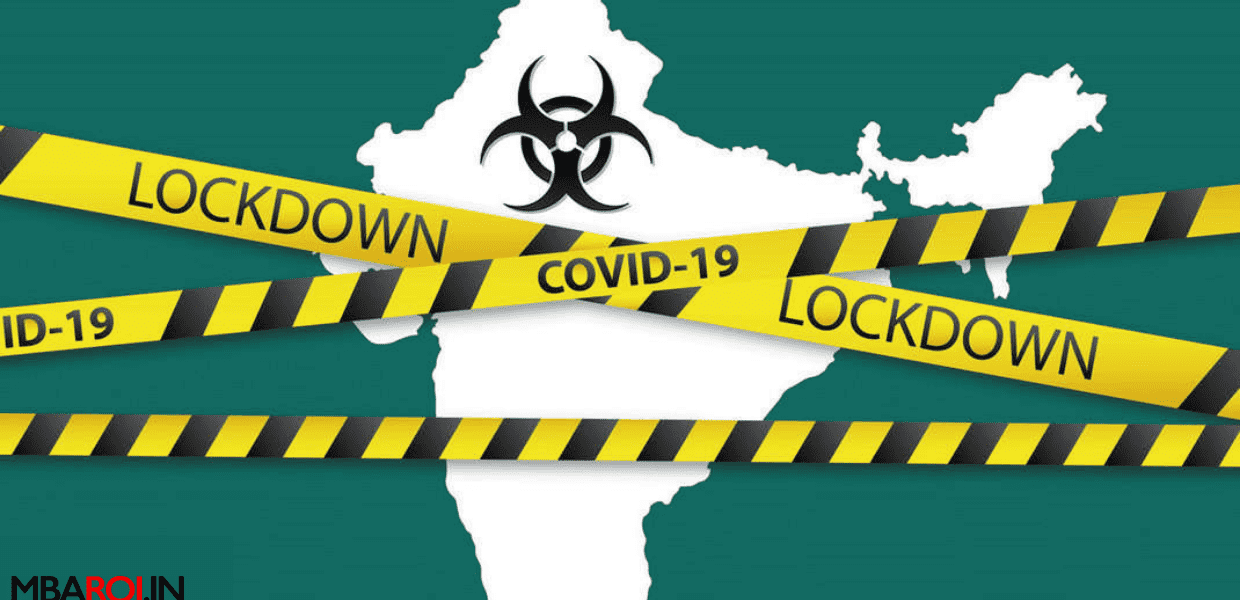The first Coronavirus case was reported in India on 30 January 2020 in Kerala. By 10th of March 2020, 50 Covid-19 cases were reported in India and the infections doubled in just 4 days. Thirteen states and UTs in India had till this time, reported at least one Covid-19 case. And the total number rose to 100 in the country, with Maharashtra reporting the maximum number of cases.
The coronavirus crisis deepened all over the world and Prime Minister Boris Johnson decided to impose a lockdown in Britain; Indian PM declared a nationwide lockdown from March 21 to April 14, 2020. The lockdown was further extended. Only essential services were kept open for access to the general public.
Most of the countries were using lockdown as a key to quarantine and to control the spread. This was an emergency and it disrupted normal life harder than ever. This step was more inevitable because Coronavirus has taken a huge toll on several countries. It had taken a large number of human lives.
Superpower America had 4,500 Covid positive cases and 88 fatalities in March. 7100 people had died due to the virus and 1,81,000 people in the world were contracted with the virus by then.
What does a lockdown mean?
A lockdown is an emergency protocol implemented by government to prevent people from the place they stayed. A full lockdown meant that the public remains at a given area where they are at the time of declaration of lockdown and must not exit or enter a building or given area.
How was Lockdown helpful/ Pros of Lockdown
Do Lockdown Actually Work? This is a question that has been raised several times by the cynics. Was it really able to put a block or was it able to decelerate the spread of COVID-19 infection? The four month lockdown threw lower income groups to misery. So, was the lockdown finally worth?
The fact that the peaking of Covid cases certainly got sluggish significantly during lockdown cannot be denied. The growth rate of new cases dropped from 23 per cent in the first week of April translating into a wider gap in the doubling time. The growth rate continued to be low even during the unlock phase.
This had averted as many as 14-29 lakh COVID-19 cases and 37,000 to 78,000 deaths by mid-May, as per the reports of Ministry of Statistics and Program Implementation.
India’s approach has been proactive and pre-emptive. Taking such measures at a time when the outbreak was relatively low has kept the spread at bay. The scale of the pandemic would have been very devastating otherwise.
Timely lockdown helped India fight Covid-19 in following ways:
Developed Health Infrastructure: The government got sufficient time to gear up to prepare their hospitals, create thousands of ICU beds, convert stadiums into isolation centers, and procure ventilators.
Innovations in Treatment: The doctors were able to come up with quick innovations in treatments and identify the effectiveness of available medicines against COVID-19. This helped cut down fatalities.
Saved More Lives: If the outbreak was uncontainable in the month of April itself; thousands of lives would have ended in the absence of beds, ventilators, PPE kits, and treatments.
Lowering The Cost Of Managing COVID: The essentials for tackling the virus situation, was in a tremendous short supply at the beginning of the outbreak. The lockdown allowed the country to formulate strategies for the production of all essential medical disposables like PPE kits, hand sanitizers, masks, etc. A lot of industries reengineered the factories instantly to produce these critical items.
In meanwhile many innovations took place in the form of no-touch treatment, using mobiles, video calls, robots, etc. to provide a safe environment to treat patients.
Environmental Benefits: The whole world witnessed a significant drop in levels of air pollution. This was a result of reduced travel and industrial production. There was an extraordinary improvement in the pollution level. The endangered, Ganges Dolphins were spotted back in various Ganga Ghats of Kolkata after almost 30 years.
Due to the reduced pollution in water, the South Asian River Dolphins were spotted at various Ganga Ghats of Kolkata. Thousands of flamingos were seen in the Navi Mumbai. A huge number of birds migrated here this year in comparison to the previous years. There was a significant drop in Nitrogen levels, as seen in the satellite images shared by European Space Agency and NASA.
Opportunity for India: The damage caused to China due to the covid-19 virus has opened the way to FDIs in India. As the world looks to reduce dependency on China, India has taken all the measures to attract foreign investments and emerging as the largest manufacturing hub in the world.
Related Topics: Ban on Chinese App in India
After the covid hit months, India has constantly been stepping high in the ‘Ease of Doing Business Index’. India now has a stronger chance to follow export-driven models. From this perspective, India has gained a lot from the recent hostile conduct of the globe towards China.
Impacts of corona virus / Cons of Lockdown
The effect of Corona Virus was felt even in the most developed economies of the world like USA, Britain, and Germany, etc. Like every other country, India is also extensively affected by this pandemic. By the month of January 2021, India saw about 100 million confirmed cases and 150 thousand deceased from coronavirus. The intensity in case of India has been severe due to the density of the population.
India is struggling with a domestic slowdown not just due to the pandemic but also because of the international recession. All of India’s machinery was utilized in order to curb the disease and set the economy moving in a positive direction. With the Announcement of lockdown every activity, excluding the essential supplies came to a standstill affecting the entire population of India.
Here are the Impact of Lockdown in India
- An estimated India’s nominal GDP growth rate of 10 percent sank to the negatives.
- Demand fell miserably low
- Production activities were closed for months
- crude oil prices fell
- Foreign trade was banned
- Price of energy, metals, and fertilizers, restrictions on the aviation industry and tourism saw a price decrease
- Inflation increased adversely affecting the economy chart.
- Due to a lack of demand and no investment, the Indian stock markets crashed. However, after the declaration of complete lockdown, Sensex and Nifty grew to some extent. The curve however is very inexact.
- Millions of jobs were lost and countless people got salary cuts.
- The hotels and airlines were vacant. The events industry dragged a loss of more than Rs. 3000 crores.
- The manufacturing sector saw a lot of shifts towards the manufacture of essential items. Supply chains were disrupted and there was a total lack of clarity bringing down production.
- The informal sector of India was hit hard and the Centre for Monitoring Indian Economy (CMIE) on 07.04.2020, reported that overall unemployment was standing at nearly 31 percent 40 crore workers went unemployed during this time.
- The Rupee value rose even more than Rs. 76 per USD, affected the cost of import of commodities and services.
Related Topic: The Impact of Covid-19 on India Economy
To counter all of this, the Union Finance & Corporate Affairs Minister, on 24.03.2020, announced several important relief packages to boost the economy.
Conclusion
For a nation, lockdown is a difficult choice to make because the costs involved are massive. Indian government’s decision to lockdown at a very early stage of the outbreak has undoubtedly saved a large number of lives. The damage was unavoidable; this step was exercised to minimize the devastative footsteps of the virus.
Instead of taking a step when the health system capacities would have been close to being exhausted and the burden of deaths crushing, India decided to lockdown at an early stage out of compulsion. India has taken sensible moves and measures to control the Covid pandemic situation. Although the critics claim that lockdown was an unsharpened instrument that was not planned enough.
There has been a lot of unnecessary misery undeniably. The disease was curbed but was not contained. A sudden reappearance to pre-lockdown conditions has allowed numbers to multiply. But still, there is some optimism in the fact that the number of active cases reached a plateau and is declining now..
This is the time to overcome the intertwined health, social and economic impacts of covid. This has to be understood as a great occasion to build back better India. The country’s commitment to pool expertise and experience will help achieve Sustainable Development Goals.
Read Current GD Topics:
- Online Education – Benefits, and Challenges.
- Farm Bill 2020- Pros, Cons, and Challenges
- Make in India: The Idea Will Make India a Manufacturing Hub
- Digital Payments in India
- What is ‘Atmanirbhar Bharat Abhiyan’ announced by PM Narendra Modi
- How 2020 will shape 2021
- Lesson for the world from covid 19
- Unemployment in India





